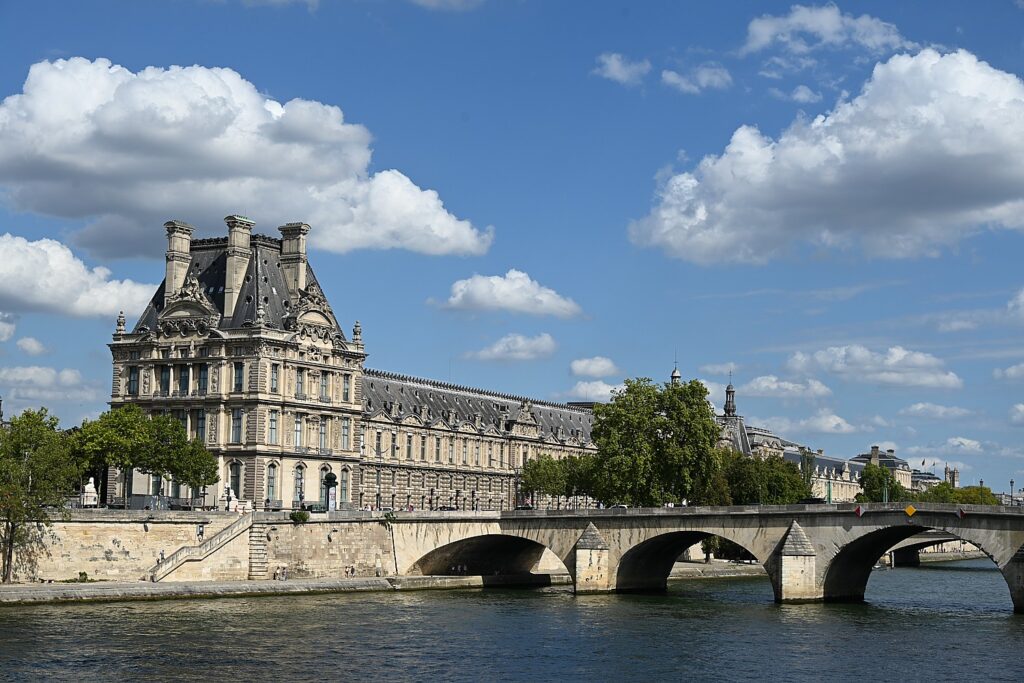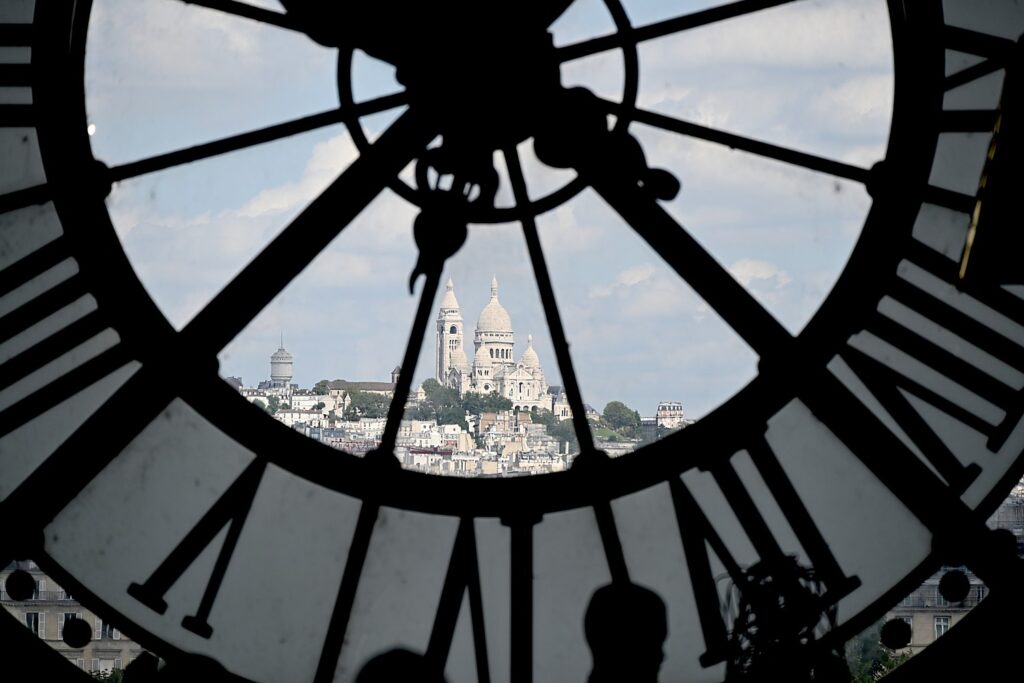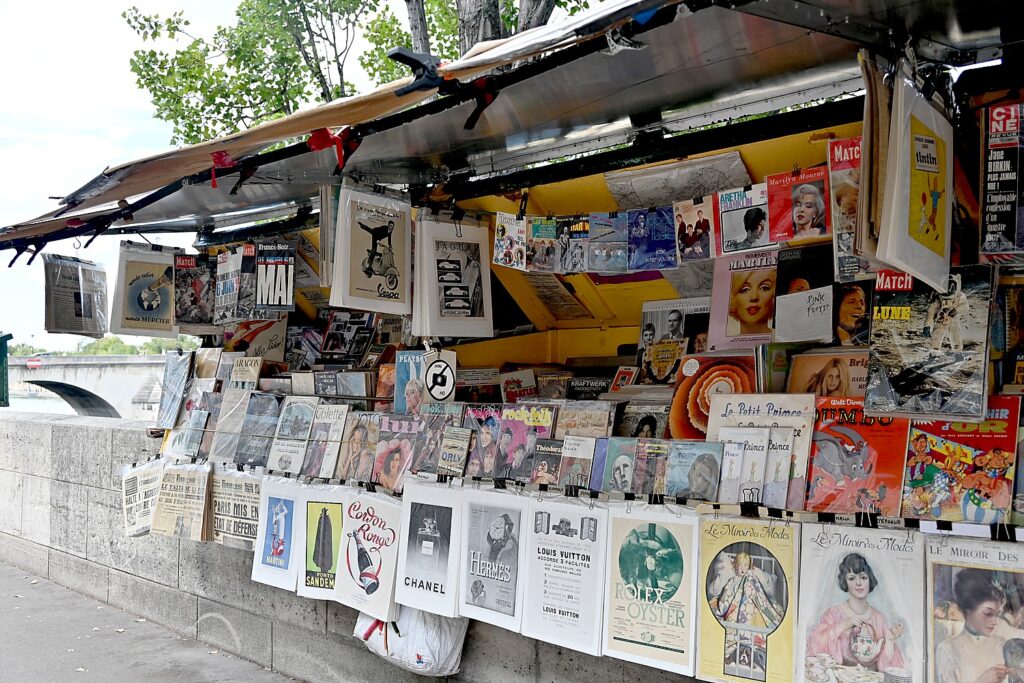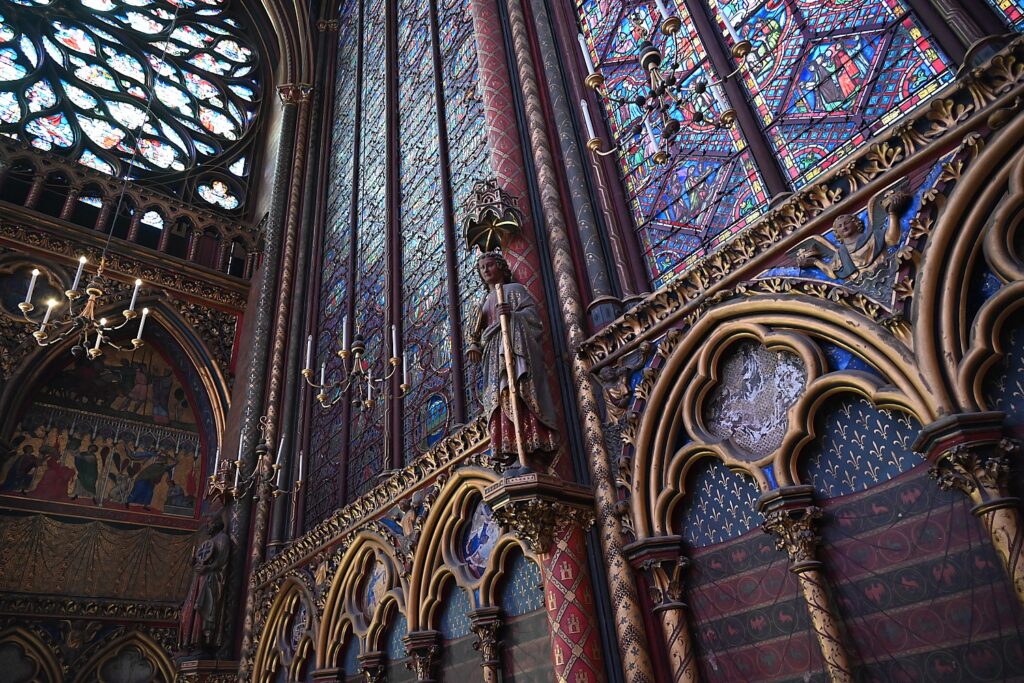
By Karen Rubin, Travel Features Syndicate, goingplacesfarandnear.com
On my first morning in Paris, as I set out from the Hotel Napoleon just across from the Arc de Triomphe in the tony 8th Arrondisement, at 10 am for a beautiful walk down Champs-Elysee to Place de la Concorde, passed the Grand Palais, across the Seine, passed the National Assembly to my destination, the Musee d’Orsay, I am immediately under the city’s spell.
Paris is regal. Majestic. Monumental. The scale of the boulevards, the buildings, the structures. It is big and bustling, but curiously, you don’t feel choked or overwhelmed – probably because no structure is taller than the Eiffel Tower and you can see out, and because the city is designed around open spaces –the wide boulevards, gigantic plazas, parks, the Seine flowing through. There are places to sit, even water fountains and misting stations, while the smaller neighborhoods, with their narrow twisting roads, are quaint and quiet (little traffic).
The level of grandeur is breathtaking, and for a moment I am thinking that only a monarchy could have built this, a democracy never would have. But in the next, I am reminded that only the Revolution opened them for public purpose.

© Karen Rubin/goingplacesfarandnear.com
I walk everywhere and Paris makes it easy (and safe). Paris is one of the most beautiful cities in the world, making strolling ideal. But for getting around, Paris is also a biking city with superb bike lanes, traffic signals (get preference over cars, in fact), and huge number of bike share stations.
It is helpful to have paper map, and not just rely on cell phone GPS (remember to download maps when you have WiFi so can access offline – I keep forgetting), but it is part of the joy of the travel experience to rely on the kindness of locals to point you in the right direction, even with limited French.
It is essential to plan your visit to Paris’ top museums and attractions in advance, and pre-purchase timed ticket, or book a time if you have the Paris Museum Pass (http://en.parismuseumpass.com/) or Paris Pass (parispass.com), and try to book as early a time as possible, or evening hours.
And though it is better to try to visit on weekdays, considering that the Musee D’Orsay is closed on Monday (I book my Le Louvre visit for that day), I pre-booked my visit for Sunday.
Musee d’Orsay

The Musee d’Orsay is housed in what had been a truly grand train station, a Beaux-Arts jewel built for the Universal Exhibition of 1900. It is famous for its fabulous collection of French art from 1848 to 1914 – paintings, sculpture, furniture, photography – including the largest collection of Impressionist and post-Impressionist masterpieces in the world.
Here you can experience for yourself (in relative peace, mind you) the exquisite works of Van Gogh, Monet, Manet, Degas, Renoir, Cezanne, Seurat, Sisley, Gaugain and Berthe Morisot – actually it seems just about all my favorite paintings by my favorite artists, as well as being introduced to outstanding works I am unfamiliar with.

The layout of the galleries is exquisite, and the views from the fifth floor gallery where the Van Goghs are displayed and from the Restaurant (you look through the massive clock to Sacre Coeur on Montmartre, like those scenes in the movie, “Hugo”) take your breath away.

Though the Musee D’Orsay is one of the largest museums in the world and the second most popular to visit in France after Le Louvre, it doesn’t feel large or crowded or intimidating. The clever layout – a warren of smaller galleries off a main, open hall – makes it feel more intimate and calm, even as I stand in front of such a popular painting as Van Gogh’s “Starry Night” (I think this is the equivalent of the Mona Lisa in Le Louvre). The way you realize just how vast the museum is – at any time about 3,000 art pieces are on display – is by realizing you’ve been there for four hours. Time melts away, like the humongous clocks you get to see through to Paris’ magnificent skyscape.

The museum has 24 Van Goghs including such renowned works as L’Arlésienne, Bedroom in Arles, Self Portrait, portrait of his friend Eugène Boch, The Siesta, The Church at Auvers, View from the Chevet, The Italian Woman, Starry Night, Portrait of Dr. Gachet, Doctor Gachet’s Garden in Auvers, Imperial Fritillaries in a Copper Vase, Saint-Paul Asylum, Saint-Rémy, Self Portrait.

The Van Gogh gallery on Level 5 has an added attraction: the most magnificent views across the Seine of Le Louvre to Montmartre from one set of windows, the Eiffel Tower from another.

There are 81 Renoirs including “The Swing” (significant when I visit the Musee de Montmartre and see the spot where he painted it!), and 18 by Toulouse-Lautrec, plus James McNeill Whistler’s famous “The Artist’s Mother’, better known as “Whistler’s Mother.”
As I go through galleries of portraits, I wonder whether the sitters contemplated becoming immortal, that their visages would be admired and their personas wondered about for centuries.

Besides seeing “in person” the art works that are among the most famous in the world (and it seems just about all my favorites), there are masterpieces by artists that may not be as “top of mind” to explore and discover as well. One, “A Street in Paris,” by Maximilien Luce, that is so haunting, depicting “Bloody Week” of May 21-28, 1871, and the brutal suppression of the Commune, a revolutionary movement that emerged from the political chaos after the French defeat in the Franco-Prussian War of 1870 and the fall of the Second Empire, events immortalized in Victor Hugo’s “Les Miserables” and the musical “Les Mis” which Luce painted 30 years after the event that so affected Luce.
It is a further demonstration of the power of art to document history, events, and bring faraway places to people, especially before photography.
Thank goodness, the really excellent notes are presented in French and English (not so in many other places).
The atmosphere of the museum is like putting yourself into the canvas.

Besides the full-service restaurant, there is an absolutely delightful café in the lower level – reasonably priced and very comfortable, where I get refueled.
Towards the end of my visit, I find myself in a grand ballroom which feels weird.

It’s a feeling of complete joy of being in that space stays with you, that rushes back like warm water, even as I review my photos later.
Open from 9.30 am to 6 pm daily, except Mondays; late night on Thursdays until 9.45 pm
Musee D’Orsay, Esplanade Valéry Giscard d’Estaing, 75007 Paris, https://www.musee-orsay.fr/en/
Ile de la Cite
From the Musee D’Orsay, I stroll down the quai along the Seine, with the marvelous book/magazine sellers, to the Pont Neuf (the oldest bridge in Paris) to Île de la Cité, a small island in the center of Paris where Notre-Dame and Sainte-Chapelle are found. It is the historic heart of Paris.

I am really interested to see the progress on the restoration of Notre-Dame Cathedral, after that devastating fire of April 15, 2019.
There is an excellent photo exhibit by photographer Tomas van Houtryve with notes documenting the dramatic story of the restoration.

A short walk from Notre-Dame, in a small park, I come upon Holocaust Memorial to the 31,000 Parisians sent to Auschwitz.

Also close to Notre Dame on the Ile de Cite is Sainte-Chappelle, famous for its stained glass windows.
Sainte-Chapelle is considered one of the finest examples of Rayonnant period of Gothic architecture. Built between 1238-1248, the royal chapel was commissioned by King Louis IX to house his collection of Passion relics, including Christ’s Crown of Thorns – one of the most important relics in medieval Christendom. It served as the residence of France’s kings until the 14th century.

A curious chart outside the chapel shows that Sainte-Chappelle cost 266,000 gold francs for the elevation of its spire and the restoration of the roof, equivalent to 1.06 million Euros, total weight 232.4 tons, 75 meters high from ground level, work done between 1853-1855.

Notre Dame Cathedral: cost 500,000 gold francs for the elevation of its spire, equivalent of 2 million euros today; total weight 750 tons, 96 meter high from ground, work from 1859 to 1860.
Adjacent to Sainte-Chapelle is La Conciergerie, the palace where Marie-Antoinette was held before her execution (it’s closed by the time I arrive).

Sainte-Chapelle and Conciergerie are operated as a museum by the French Centre of National Monuments.
La Sainte Chapelle, https://www.sainte-chapelle.fr
I pick up food for my dinner at a boulangerie on the quai.

Walking back to the Hotel Napoleon, I stroll alongside the full length of Le Louvre museum – once a palace – stunned by how large, and how exquisitely ordained it is (I will be visiting the next day), through Tuileries Garden to the Place de la Concorde, the largest square in Paris, where King Louis XVI, Marie Antoinette and Robespierre were executed by guillotine during the French Revolution.

I walk by the Petit Palais (where there is a Sarah Bernhardt exhibit I wish I could have seen; free admission to the collections!), to the Champs-Élysées. (There is really good signage that direct you to the places visitors most want to see.)

Eiffel Tower
I get back to the Hotel Napoleon and rest awhile before heading out again to see the Eiffel Tower at night.
I walk down the Champs Elysee, cross over toward the Seine and take in the classic café scene. There are innumerable couples in this City of Love.

The view from across the Seine – with the Bateaux Mouches (sightseeing boats) passing by – is enchanting enough, but seeing the Tower from its base is breathtaking.

The Eiffel Tower is one of most beautiful structures in world – so elegant, so graceful, seemingly as light, delicate and intricate as filigree. I am surprised to learn that the design was criticized, even ridiculed when Gustave Eiffel, the engineer whose company designed and built the tower from 1887 to 1889, proposed it.
Nicknamed “La dame de fer” (“Iron Lady”), it was constructed as the centerpiece of the 1889 World’s Fair, and to crown the centennial anniversary of the French Revolution. (The tower also was supposed to be a temporary installation, but Eiffel pushed to have its lease extended and ultimately, became a permanent fixture of the city.)

We marvel at its beauty but in 1889, the tower was celebrated more as a historic feat of engineering: the first structure in the world to surpass both the 200-meter and 300-meter marks in height. At 330 meters (1,083 ft.) high, the Eiffel Tower is equivalent to an 81-storey building, and still is the tallest structure in Paris, dominating the skyline from wherever you are. During its construction, the Eiffel Tower surpassed the Washington Monument to become the tallest man-made structure in the world, a title it held for 41 years until dethroned by New York City’s Chrysler Building in 1930.

The tower has three levels that visitors can reach, with restaurants on the first two. The top level’s upper platform is 276 m (906 ft) above the ground – the highest observation deck accessible to the public in the European Union.
It is fascinating to learn that the top level was actually a private apartment built for Gustave Eiffel’s personal use, which he decorated with furniture by Jean Lachaise and invited friends such as American inventor Thomas Edison. Today, you can’t visit the entire apartment, but there is a reconstruction of Gustave Eiffel’s office. Through the windows, you can see wax figures of Gustave Eiffel and his daughter Claire being visited by Edison.
There is also a new immersive experience that takes you inside Gustave Eiffel’s office (accessed by scanning a QR code on the first floor). While waiting for the lift on the first floor, you can also peruse historical documents with monitors, tactile screens, display cases, digital albums and photocopies of objects.
There are also new guided tours which must be booked online
The Eiffel Tower is one of the highlights of visiting Paris – in fact, one of the most-visited pay-to-enter monuments in the world, with almost 6 million visitors a year. It is almost essential to book a timed ticket ahead of time.
The wait for tickets – if they are not totally sold out – can be long. If you have interest in going to the top, book your tickets as soon as you know your dates for Paris. (Online tickets go on sale 60 days in advance for the elevator.)
But for a completely different experience (and if tickets for the elevator are sold out), you can also climb the stairs – from ground level to the first level is over 374 steps, and 300 more to the second, making the entire ascent 674 steps – about 20 minutes per level.
Stairway tickets for the second floor are sold online (up to 10 days in advance) or sold on-site. If you want to go to the top, you would need to purchase “stairway + lift” tickets. These tickets are only sold on-site in the South leg of the tower, guaranteeing minimal queueing times (only the most gung-ho visitors), where you take the stairs up. In peak periods, another leg may be opened for stairway ascents.
Other experiences: Madame Brasserie offers a lunch and dinner menu on the first floor (reservations strongly advised; the reservation includes the ascent to the 1st floor of the Eiffel Tower, but not to visit to the 2nd floor or to the top).
Reservations for dining or eating at the Jules Verne (2nd floor) must be made on the dedicated website. If you make a reservation for the Jules Verne, a private lift in the south pillar will take you directly to the restaurant when you arrive. The visit of the Eiffel tower is not included.
You can book your ticket for the top of the Eiffel Tower and add a glass of champagne at the champagne bar. The champagne bar at the top is open every day, from 10.30 am to 10.30 pm.
I would say the most enchanting time to experience the Eiffel Tower is at night.
Eiffel Tour, Champ de Mars, 5 Av. Anatole France, 75007 Paris, France, https://www.toureiffel.paris/en/planning-smooth-visit, https://www.toureiffel.paris/en/rates-opening-times
I stand in a park at the tower’s base, where there is a festive atmosphere among the throngs of people gathered – but for the Olympics, there will be a stadium built in front of the tower, before walking back to the Hotel Napoleon.
What a day – I must have walked 12 miles plus 3 hours worth in the museum. Here’s where I went:
Musee D’Orsay
Notre-Dame Cathedral
Sainte-Chapelle
Tuileries Garden
Place de Concorde
Champs-Elysee
Eiffel Tower at night
More planning help from the Paris Tourist Office, https://parisjetaime.com/eng/. Online ticketing at https://parisjetaime.com/eng/tickets.
Next: Day2 Highlighted by Le Louvre
See also:
ROMANCE IS AT THE HEART OF THE HOTEL NAPOLEON IN PARIS, CITY OF LOVE
VISITING PARIS THIS YEAR? PLAN IN ADVANCE
_______________________
© 2024 Travel Features Syndicate, a division of Workstyles, Inc. All rights reserved. Visit goingplacesfarandnear.com and travelwritersmagazine.com/TravelFeaturesSyndicate/. Blogging at goingplacesnearandfar.wordpress.com and moralcompasstravel.info. Visit instagram.com/going_places_far_and_near and instagram.com/bigbackpacktraveler/ Send comments or questions to FamTravLtr@aol.com. Tweet @TravelFeatures. ‘Like’ us at facebook.com/NewsPhotoFeatures



